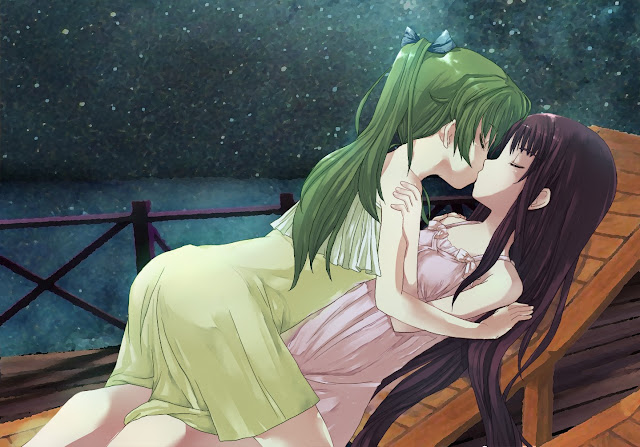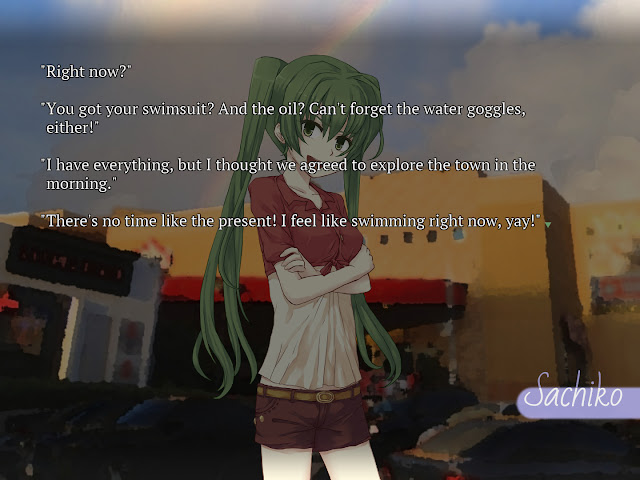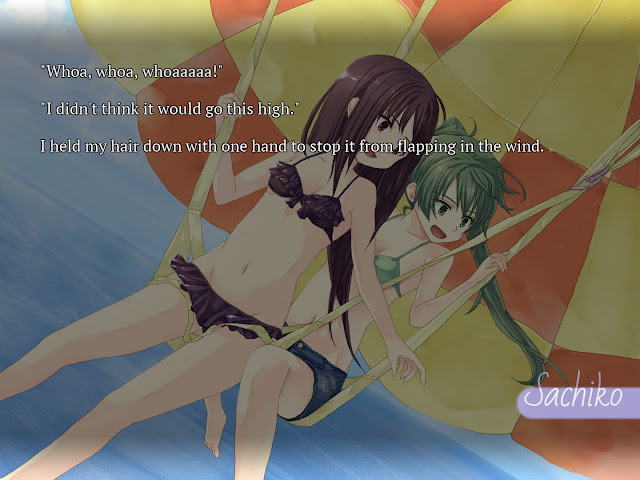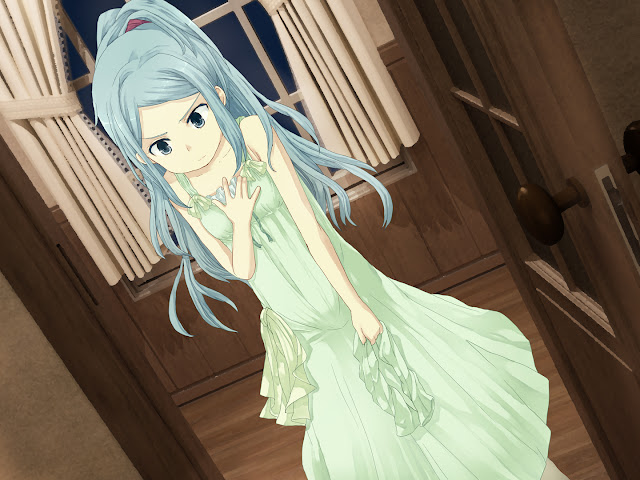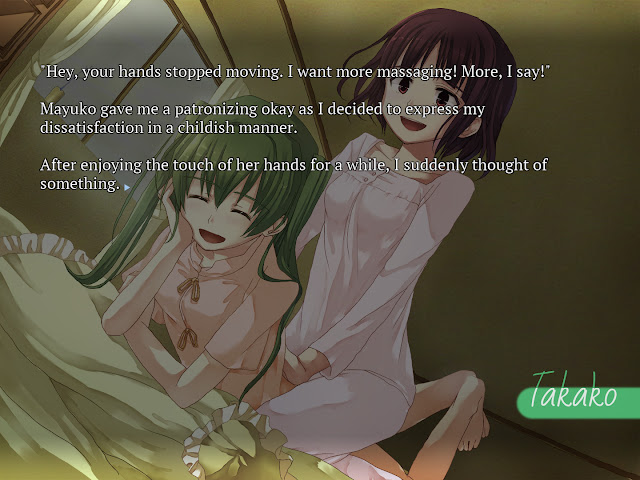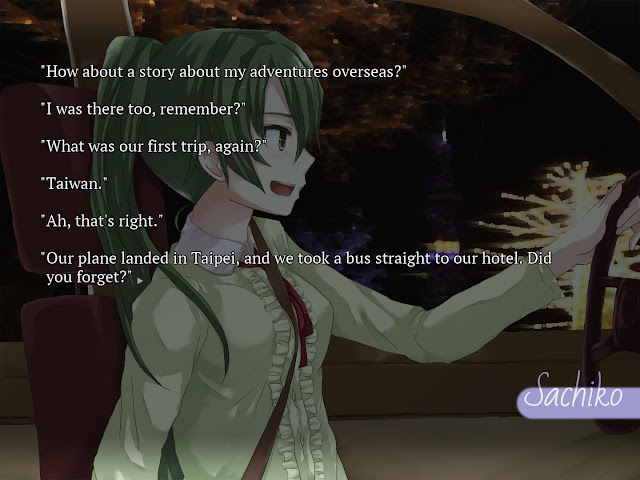Interview by Matt S.
Not every game lands and is met with immediate success. For many developers – especially those that operate in niche spaces like visual novels – success comes organically, as word of mouth spreads and people discover that this humble little thing, swimming in an ocean of humble little things, has a special quality that elevates it well above its peers.
SeaBed is one example. It’s almost too easy to overlook this VN, lacking in the bells and whistles of its “big-budget” peers like Steins;Gate or Clannad. But then something happened. People started playing it. People started realising that it has a valuable story to tell. Then it was ported to Nintendo Switch. Then it got a special edition physical print run. SeaBed will never sell the kind of numbers of the likes of The Last of Us 2, but you get the sense that people are going to be “discovering” this one for many years down the track and its star still has much further to rise.
I was fortunate that I had the opportunity to chat with writer & illustrator, hide38, and director & programmer, AKIRA about the game, ask their thoughts on its themes, why they opted for the visual novel medium, and so on.
Matt S: Can you start by telling me what inspired SeaBed – where did the idea for the game come from?
hide38: It all started with a four-panel yuri manga series featuring Takako and Sachiko that I drew when I had time to spare at work. I showed my manga to AKIRA, a friend in my neighbourhood who’s into anime and video games, and he liked it and wanted to read more. It was that moment when I decided to put all those random episodes together into one by making SeaBed.
AKIRA: What I liked about hide38’s manga were the character designs and unique dialogue. The manga was slice-of-life and didn’t have much happening, but reading some of the episodes made me experience what seemed like wordless flashbacks, which got me curious about their untold backstories. So I casually went and asked hide38 for the details, at which point I didn’t even imagine he’d turn this little chitchat into a big deal and drag me into making SeaBed with him!
Matt S: What was it about the video game platform that appealed to you – rather than other storytelling mediums such as the novel or film?
hide38: Since I was a kid, I’ve been a big fan of fantasy novels, video games, and anime. Before SeaBed, I’d always been trying to create video games or manga myself, but I couldn’t finish any of them on account of my lack of skills or motivational issues. So I promised myself I’d complete SeaBed when I decided to make it. The reason why I chose the video game platform to tell my story was that I figured from my experience it’d be what I’ll able to handle the best. If I’d had more skill in the field of manga, SeaBed might have been a manga series instead.
AKIRA: We chose the visual novel as our storytelling medium because when we released the very first version of SeaBed, we learned it didn’t require much technical skill for us to achieve the quality we wanted to. I had no skills for writing or drawing, but I thought I could contribute as a programmer and started by learning the basics of game programming. In hindsight, I was being reckless back then, but right now I’m happy from the bottom of my heart that it worked out somehow.
Matt S: More mature storytelling mediums – poetry, literature, film – all have firmly established structure and “best practice” by now, but you get the sense that video games, and VNs within that, are still “writing the rules.” Did you find the visual novel format a structural challenge at all when developing SeaBed?
hide38: There were no structural challenges for me because all I had to do was write and draw. I’ll admit, though, that I went through many difficult times during my writing and drawing processes… I suspect AKIRA is the better person to answer this particular question.
AKIRA: The biggest challenge for me as the game’s director was placing the right character sprite(s), the right background graphics, the right background music, and the right sound effect according to each scene of the story. I paid most attention to not adding anything unnecessary that could be visual/auditory noise distracting the player while playing the game.
SeaBed has so many different scenes that I had to spend so much time and effort collecting and organising a significant amount of graphics and audio materials. From that experience, I’d say the visual novel as a medium would work well with stories that take place in a limited number of fixed locations, like school-life stories. While I do find it challenging to make visual novels, I also believe that the medium helps you better express each scene’s nuance and atmosphere in the way you want to; Using pauses in conversation, the characters’ facial expressions, sound effects to attract the player’s attention, background music to make an impression of the scene in the player’s mind, etc. In that sense, visual novels feel to me like movies that you could make on an extremely low budget and lengthen as much as you want. I enjoyed the whole gaming development, which made me feel like a film director.
Matt S: Can you tell me how you arrived at the character designs for the art? Did the artist read the VN and then build a character around their impressions, or was a different creative process involved?
hide38: I was responsible for both the writing and the character art, so there was no communication between the writer and the artist regarding character designs, yet I asked AKIRA for feedback on my art to see if the way the characters looked fitted the way they spoke in text or if there was anything wrong with the art itself. The most challenging thing was designing outfits because I wasn’t good at it in the first place.
AKIRA: hide38’s four-panel manga series had already featured not just Sachiko and Takako, but Mayuko, Sanae, and Kozue, and their designs didn’t change greatly. The only noticeable change was Kozue’s hairstyle: Her hair was initially very short, and we made it long so she could look cuter as a little girl.
hide38 gave birth to the characters of Narasaki and Nanae in his process of expanding the story, and he first made their character artworks based off of his imagination and then brushed them up with my feedback on them. Honestly, though, I didn’t give him that much feedback because I was already a big fan of his manga (laugh)
Matt S: Do you think SeaBed could have worked as a narrative if you took a more “gamey” approach to it? Why/why not?
hide38: On the early stage of development, we did consider building a dialogue choice feature, but we ended up avoiding it because the more I wrote, the more easily I could imagine I wouldn’t be able to wrap the story up with such a feature. Other “gamey” ideas we had in mind were 1) that the story unfolds in one single chronological order, and the player chooses a character whose point of view they want to read the story from, or 2) a random text generator. These ideas derive from the fact that we were interested in creating a visual novel that gave you a slightly different impression when you replay it, yet in the end we decided we would make our game better by focusing on one fixed story.
AKIRA: SeaBed could’ve worked as, say, an adventure game. But if SeaBed were an adventure game with dialogue choices and multiple endings, it would obscure the feelings and meanings that SeaBed the visual novel gives at the end, because SeaBed’s story doesn’t show any crystal-clear goals like ones in romance-focused visual novels or fighting games.
I bet I would’ve given up on SeaBed if I’d had to put in any complicated feature. I was a beginner game programmer back then and simply had no room to do anything other than the minimum to make a game that actually worked.
Matt S: The game’s core theme (at least the way I interpreted it) was the transitory and fragile nature of memory – how easily things can be lost, and conversely how precious they are precisely because they are so fragile. How did you research and develop this theme, and were you sharing observations on reality in exploring that theme?
hide38: Just as you mentioned, I was sharing in SeaBed my own experiences in and observations on reality. While I was writing SeaBed, I’d always jot down my thoughts or things that I found interesting, asking myself if I could use any of this for the game. The game has many different themes in it, both great and small. “Memory” is definitely a big one, and if you’ve felt something about it from playing the game, that makes me very happy. But I doubt I’d set “memory” as a theme at the beginning of my writing and then researched and developed it over time. Things happen every day, and each individual deals with them in their own way – “memory” was a theme/concept that popped up in my mind while I was describing how people in the game were dealing with their everyday stuff, or so I believe. So, if you ever felt something, even if a tiny little thing, from playing the game, then that makes me very happy.
AKIRA: We actually visited San Francisco. A southern island, too (laughs). I especially enjoyed working on the prologue because it was like looking back on memories of those trips. Besides experience and observations on reality, we were also influenced by many kinds of movies we’d watched.
Matt S: Do you think we’ll get to the point that Visual Novels are respected as works of literature? Are we going to have storytellers that have the cultural resonance of Soseki, Dazai or Mishima down the track… or do we already have VNs that you think will be seen in that light?
hide38: I’m not sure because I haven’t read those classic works of literature. But I’m interested in them so I’m going to read some when I have the time.
AKIRA: I’m not sure. I don’t tend to read those kinds of books.
Matt S: Visual Novels seem to be one of the few spaces within video games that explore yuri themes – what do you think is the appeal of the “genre” in VNs that doesn’t necessarily translate elsewhere?
hide38: I’m sorry but I don’t have much to say about this topic, because I hardly play visual novels. One thing I can say, though, is that the biggest benefit we got from using the visual novel genre was that we were able to make the game as big as we wanted to.
AKIRA: On social media, you can find yuri illustrations posted with comments by the artists. I believe those comments make the illustrations many times better and more attractive. In yuri visual novels, the comments are replaced with sentences, music, and many other things, and I think it’s the appeal of the genre in visual novels. I know it’s not something that applies only to the yuri genre, but still.
Matt S: Have you been surprised by how enduring SeaBed has been? It seems to me that where most video game genres are characterized by having an explosive launch and rapid drop away, it’s almost standard that the best visual novels have a modest launch but continue to be “rediscovered” for years.
hide38: Yes, and I still am. I hope more people play the game.
AKIRA: I’m surprised. Extremely. To be completely honest, I didn’t even expect SeaBed would be accepted by anyone. We brought only 50 copies of the game to the first doujin event where we sold it. We even priced the game as low as we could because we weren’t confident that those 50 copies would sell out there. We just wanted someone to play the game. Anyone. I can’t believe how many people have now played and liked it. It’s like a dream.
Matt S: Aside from SeaBed (of course), what would your “canon” reading list for visual novels be? What five or six would you recommend people new to the genre start with.
hide38: I’ve only finished two visual novels so far: –
Shisha no Yobu Yakata
Atlach=Nacha
If you’ve played them, you should know how much they influenced me…!
AKIRA:
Steins;Gate
Fate/stay night
Higurashi When They Cry
My list isn’t too interesting but I played these games in their prime. I haven’t played many visual novels either, and I only know the most popular ones like above. Out of the three VNs, Fate inspired me the most and was the reason why I chose the Kirikiri engine to develop SeaBed.
Thanks to both hide38 and AKIRA for taking the time to participate in this interview, and thanks to Fruitbat Factory for providing the translation of the interview. If you haven’t read SeaBed yet, you absolutely should. It’s readily available on both PC and Nintendo Switch, and it’s a beautiful example of what visual novels are capable of as a storytelling medium.
– Matt S.
Editor-in-Chief
Find me on Twitter: @mattsainsb

